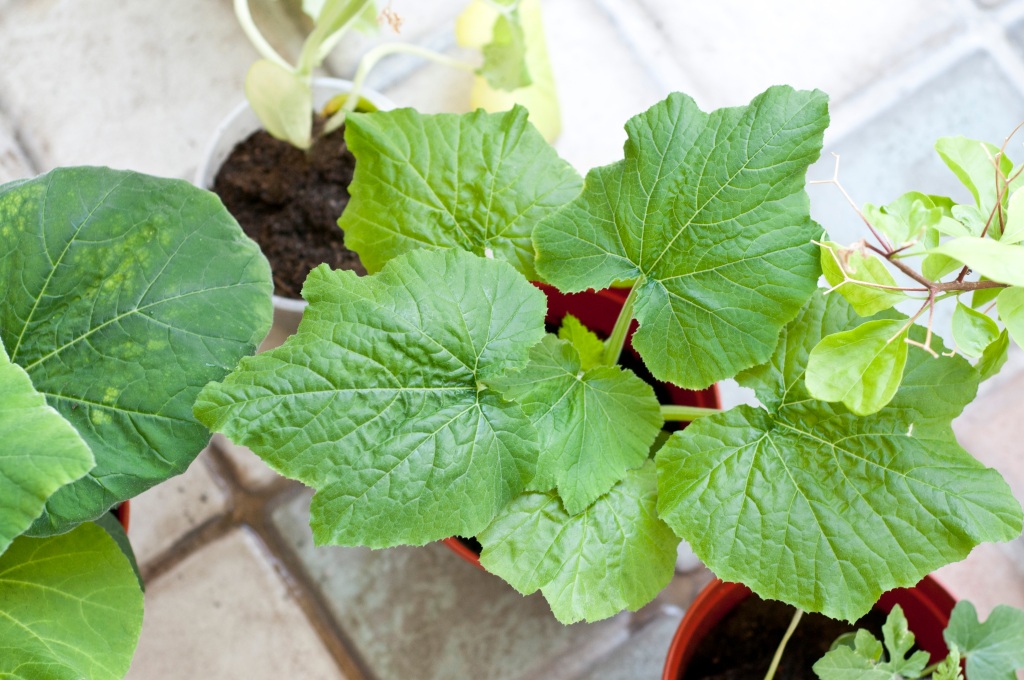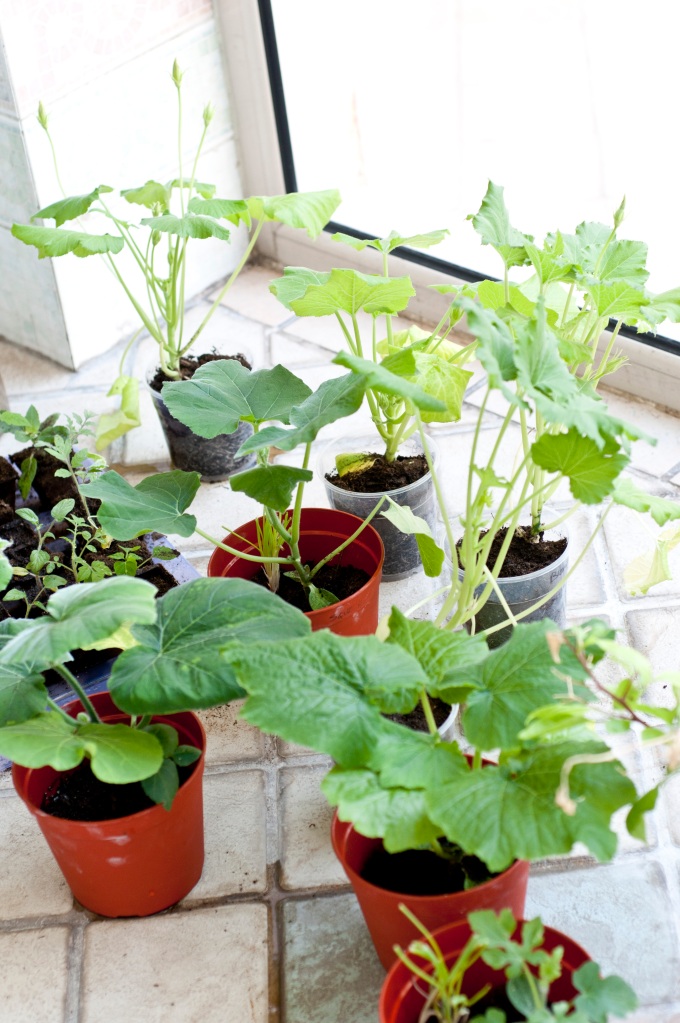I've put the time and effort into growing my own healthy vegetable transplants indoors under lights and now it’s time to transplant them into the garden. But before I head for the garden I must be sure to harden off those tender seedlings or I'll be making a mistake that could destroy all my careful efforts. I left the country for about two weeks, and since then,
my seedlings got yellow and sad, but they're still alive! and I'm sure they can make it with the
proper care! 
[/caption] Even after the temperatures drop,
conditions outside in the garden are still much harsher than your home grown vegetable seedlings are accustomed to. If you were to take those sensitive plants and move them directly into the garden there’s a good chance that they would not survive the transition. What the vegetable plants need is a
hardening off period where they can slowly adapt to the more intense light, winds, temperature variations, and other conditions that they will encounter in the outdoor world. Hardening off requires time but the process itself is a simple one. Begin by carefully
transporting your seedlings to a somewhat sheltered location where they can get their first taste of what life outdoors is going to be like.
This initial exposure should be brief, only an hour or two during the early morning or late evening hours.
 Start the hardening off process a couple of weeks before you anticipate planting the seedlings out into the garden.
Start the hardening off process a couple of weeks before you anticipate planting the seedlings out into the garden. Each day you will be moving the plants outside for increasing lengths of time,
allowing them to gradually get used to the sunshine, wind, rain, and other outdoor conditions. In my case I've moved them to a warm area with direct sun through glass windows. The area is not as hot as it is outside, so I can leave them all day. The Terra-cotta pots are from TrueValue.

- root-bound zucchini plants
Being Root-Bound: "When a plant grows for too long in its container, it generally becomes root-bound. With no room for additional growth,
roots become tangled, matted, and grow in circles. Root-bound plants placed in the ground
without having their roots untangled often fail to overcome their choked condition. This results in stunting the plants growth and potential." My plants are definitely root-bound and
need to be transplanted as soon as possible. The plants look yellow and weak because of malnutrition,
they're hungry! this is why I've just added a layer of compost to the
very small pots to give them a quick fix.
They will bounce back, but the tiny pots are not enough,
they will soon be transplanted into their permanent location; the square foot raised beds 
Don't skip this crucial step when transferring your seedlings to their containers or in the ground.

 [/caption] Even after the temperatures drop, conditions outside in the garden are still much harsher than your home grown vegetable seedlings are accustomed to. If you were to take those sensitive plants and move them directly into the garden there’s a good chance that they would not survive the transition. What the vegetable plants need is a hardening off period where they can slowly adapt to the more intense light, winds, temperature variations, and other conditions that they will encounter in the outdoor world. Hardening off requires time but the process itself is a simple one. Begin by carefully transporting your seedlings to a somewhat sheltered location where they can get their first taste of what life outdoors is going to be like. This initial exposure should be brief, only an hour or two during the early morning or late evening hours.
[/caption] Even after the temperatures drop, conditions outside in the garden are still much harsher than your home grown vegetable seedlings are accustomed to. If you were to take those sensitive plants and move them directly into the garden there’s a good chance that they would not survive the transition. What the vegetable plants need is a hardening off period where they can slowly adapt to the more intense light, winds, temperature variations, and other conditions that they will encounter in the outdoor world. Hardening off requires time but the process itself is a simple one. Begin by carefully transporting your seedlings to a somewhat sheltered location where they can get their first taste of what life outdoors is going to be like. This initial exposure should be brief, only an hour or two during the early morning or late evening hours.  Start the hardening off process a couple of weeks before you anticipate planting the seedlings out into the garden. Each day you will be moving the plants outside for increasing lengths of time, allowing them to gradually get used to the sunshine, wind, rain, and other outdoor conditions. In my case I've moved them to a warm area with direct sun through glass windows. The area is not as hot as it is outside, so I can leave them all day. The Terra-cotta pots are from TrueValue.
Start the hardening off process a couple of weeks before you anticipate planting the seedlings out into the garden. Each day you will be moving the plants outside for increasing lengths of time, allowing them to gradually get used to the sunshine, wind, rain, and other outdoor conditions. In my case I've moved them to a warm area with direct sun through glass windows. The area is not as hot as it is outside, so I can leave them all day. The Terra-cotta pots are from TrueValue. 
 Don't skip this crucial step when transferring your seedlings to their containers or in the ground.
Don't skip this crucial step when transferring your seedlings to their containers or in the ground.












